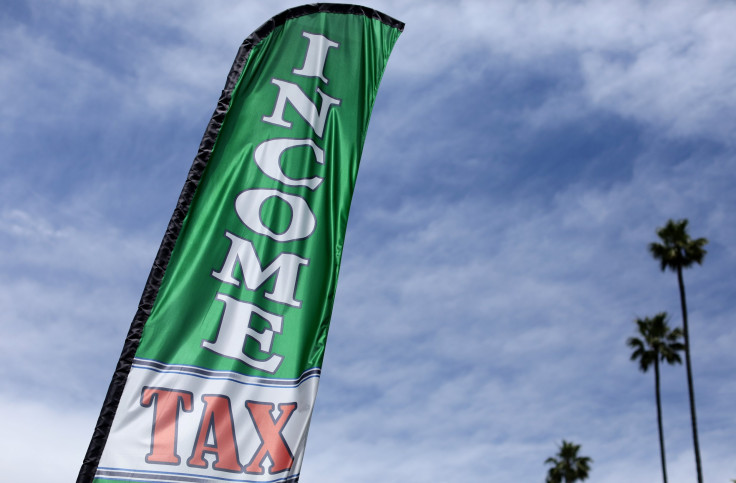Do Lower Taxes Spur Economic Growth? What Happened In No-Tax States

Supreme Court Justice Louis Brandeis once famously called the states “laboratories” of government, because they allow residents and their representatives to experiment with policies before they are adopted, or rejected, by the federal government. The results of these experiments are often cited during debates over federal policy, like the tax reform debate that is currently consuming Washington.
As tax reform moves forward in Congress, and Republicans insist that massive tax cuts will spur economic growth without increasing the deficit, a study released Thursday examines the economic performance of our laboratories. In comparing states with no income taxes to states that tax the rich heavily, the study’s authors found the zero income tax states are producing poorer returns than the heavily taxed ones — and putting more of a tax burden on the poor.
Researchers at the non-partisan and non-profit Institute on Taxation and Economic Policy compared the nine states without personal income taxes, which include Florida, Texas and Washington, to the nine states with the highest top marginal tax rates over the last decade, which include California, New York and Oregon.
They found the states with the highest top tax rates (which had an average top tax rate of 10.01 percent) outperformed the states without income taxes in per capita GDP growth, 25.8 percent to 17.4 percent between 2006 and 2016. The highly taxed states also generated slightly higher levels of per capita personal income growth, disposable personal income growth and personal consumption growth, as well as prime age employment, a measure of the job market that, unlike the traditional unemployment rate, includes people who have stopped looking for work.
“Over the last decade, economic growth in the states without income taxes has lagged behind growth in the states with the highest top personal income taxes,” wrote the study’s authors, Carl Davis and Nick Buffie. “While this finding does not indicate that higher income tax rates necessarily cause economic growth, it does call into question the notion that cutting or abandoning state income taxes leads to a clear improvement in state economies.”
The study is a rebuttal to a series of papers called “Rich States, Poor States” published over the last decade by the American Legislative Exchange Council (ALEC), a coalition of state legislators and corporations that has long advocated for lower taxes, fewer regulations, and, in recent years, a new Constitutional convention designed to create a new Constitution containing strict limits on federal spending.
Those papers were authored by economist and Reagan administration veteran Arthur Laffer, who created the theoretical “Laffer Curve ” based on the relationship between tax rates and tax revenue that gave birth to Reagonomics. Not surprisingly, Laffer’s ALEC papers show how states with zero tax rates have greater growth in personal income, payroll employment and tax revenues between 2005 and 2015.
But Davis and Buffie point out that Laffer uses total, not per capita, economic indicators. By using per capita numbers, Davis and Buffie demonstrate how the increases Laffer touts are actually a product of population increases, increases which the researchers argue are part of a larger migration and birth pattern that are unrelated to tax rates.
Of course, Davis and Buffie admit they could not control for the nearly endless variables that exist between state economies, including a state’s dominant industries, natural resources, tourism industry, federal spending, geography and climate. And perhaps unsurprisingly, given the geographic clustering of more liberal, pro-tax political attitudes, the nine states with high taxes were located in the Northeast and West Coast, with the exception of Minnesota. The no-tax states were more diverse geographically, with New Hampshire, Tennessee and Florida on the East Coast, and Alaska and Washington on the West Coast.
But wherever the states are located, what the study’s calculations lay bare is the difference between the tax rates paid by the rich and poor in the no-tax states (the study’s authors didn’t examine the middle class).
States with no income taxes must generate revenue in other ways, which usually mean higher sales taxes, for example. Since these taxes are not progressive, like income taxes, they shift the tax burden from the rich to the poor.
For the bottom 20 percent of taxpayers, the effective local and state tax rate — or the rate that actually gets paid -- is 10.7 percent on average in no-tax states, slightly higher than the 10 percent effective rate paid by the bottom fifth in the nine high-taxed states. Not a huge difference. But the divide between what the richest people pay between the two groups of states is significant. The top one percent of earners in the no-tax states pay an effective tax rate of just 2.2 percent, while in the nine high-rate states they pay 7.4 percent.
The study’s authors don’t comment on the fact that the bottom fifth of taxpayers pay higher rates than the top one percent in both state groups.
Taxpayers living in states with income taxes can deduct their state and local taxes on their federal taxes as part of the SALT deduction. Congress is currently debating eliminating or changing that deduction, which costs the federal government an estimated $100 billion a year.
© Copyright IBTimes 2024. All rights reserved.












